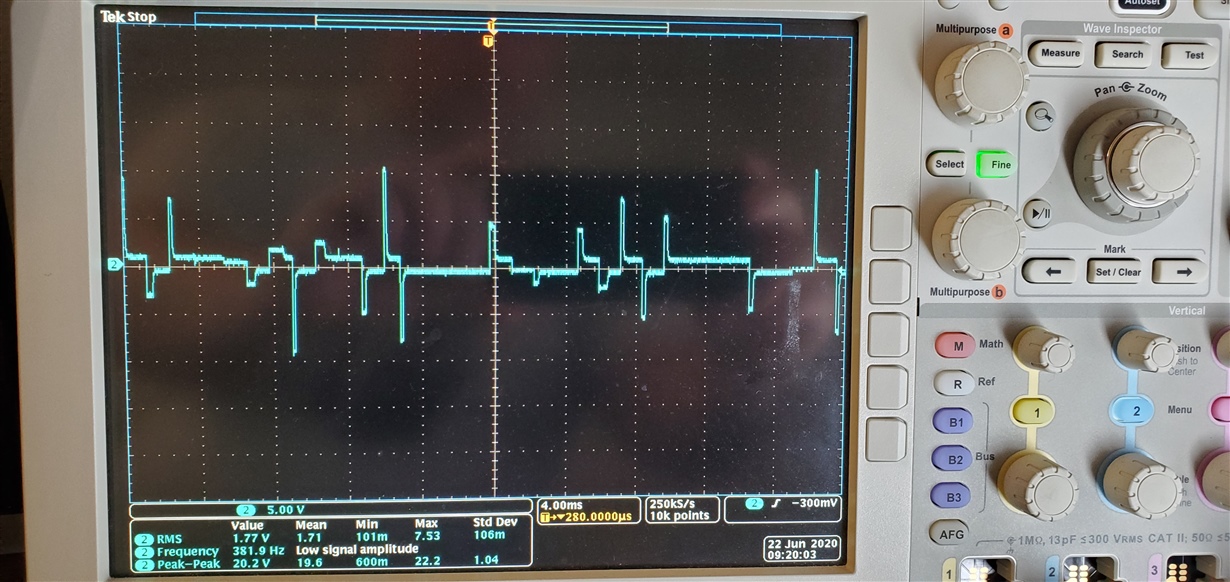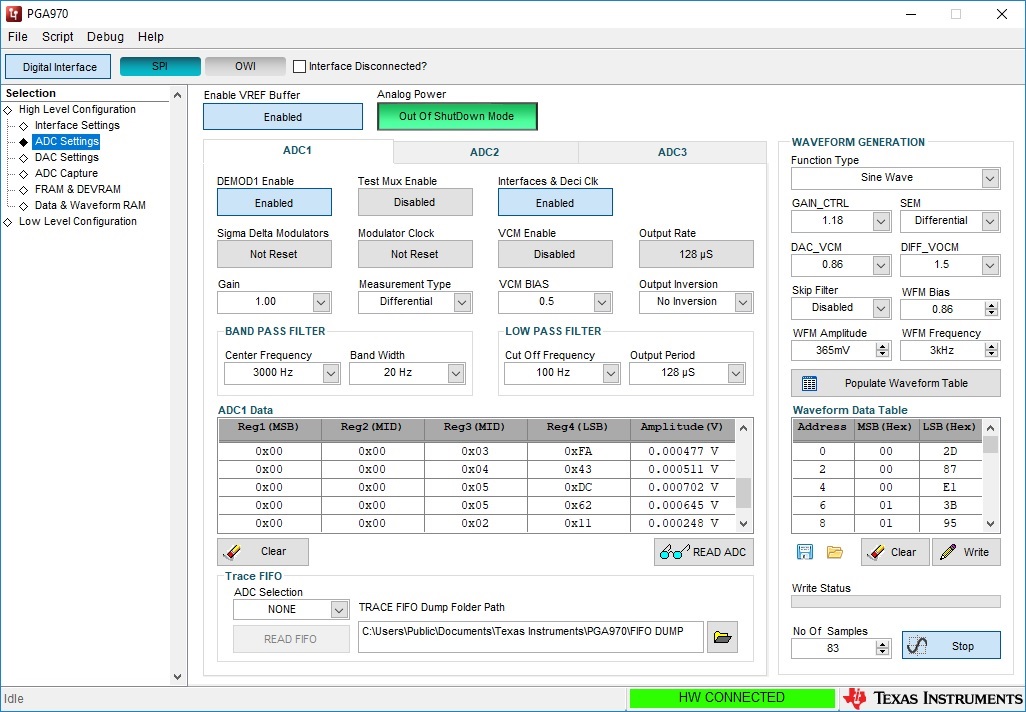When I first got my PGA970EVM working using only the GUI (I have yet to alter any firmware), I was able to create the needed 3kHz 5Vrms excitation signal for my LVDT. Unfortunately, I don't have a picture of it working because I didn't see a need to do so when it was working as expected. Recently, I swapped out the LVDT for another similar LVDT. I am not sure what happened, but this is the waveform I get now.
It also appears that ADC 2 is no longer working. I can get small signal readings from one of the secondary's through ADC1, but I get no reading at all from ADC 2.
I'm thinking that there was something wrong with the wiring of the new LVDT or it possibly was defective in some way or there was an ESD event. In any case, there was no protection on any of those inputs/outputs and now my board is now, just a noise generator at best and garbage at worst.
Any thoughts? Here are the settings with no jumper changes from delivery.



